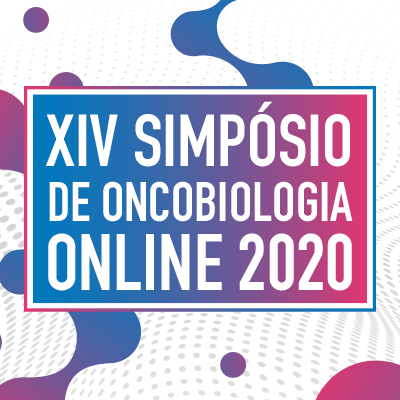Proceedings of Oncobiology Symposiums
Proceedings of XIV Oncobiology Symposium
ATP CITRATE LYASE SUPPORTS UDP-GLCNAC BIOSYNTHESIS IN A549 CELLS ENGAGED IN EPITHELIAL TO MESENCHYMAL TRANSITION
How to cite this paper?
To cite this paper use one of the standards below:
How to cite this paper?
INTRODUCTION AND OBJECTIVES: Epithelial to mesenchymal transition (EMT) is a process in wich epithelial cancer cells lose epithelial morphology and acquire mesenchymal markers such as N-cadherin and vimentin. EMT triggers motility and invasiveness leading to cancer cells to spread. We previously observed that EMT process in A549 lung cancer cells overactivated HBP pathway as well as displayed glycosylation changes related to cancer progression (Lucena et al., 2016). HBP overactivaton requires increased nutrient fluxes to sustain UDP-GlcNAc biosynthesis. In this study we considered to study ATP citrate lyase levels because we hypothesize that its activity could support UDP-GlcNAc biosynthesis. ACL is the main enzyme that generates Acetyl-CoA in cytoplasm wich is well known to be used for lipid biosynthesis. The acetylation step of UDP-GlcNAc biosynthesis requires Acetyl-CoA but the main source of this molecule during EMT and cancer models remain elusive.
MATERIAL AND METHODS: We performed A549 cell culture using TGF-β to trigger EMT and SB204990 to inhibit ACL enzyme, we performed UDP-GlcNAc quantification using HPLC, used TLC to detect lipid changes. By western blotting analysis we detected ACL protein levels and molecular markers to validate EMT. We quantified citrate synthase activity and citrate. Moreover, we performed flow citrometry to detect glycophenotype changes.
RESULTS AND CONCLUSION We described a new molecular fueling resource to UDP-GlcNAc during EMT wich depends on ACL activity. We observed that some lipids decreased indicating that lipid biosynthesis is not overactivated during EMT and that possibly AcetilCoA is been diverted to UDP-GlcNAc biosynthesis during EMT. Moreover, ACL inhibition decreases UDP-GlcNAc biosynthesis only during EMT and decreased terminal α 2,6 linkage sialic acid glycoconjugate strongly suggesting ACL inhibition is a promising target to avoid cancer spreading by disrupting aberrant glycosylation.
Dúvidas
Andrea Claudia Freitas Ferreira
Olá!
Parabéns pelo excelente trabalho!
Porém, fiquei cm algumas dúvidas:
O que é a via HBP e qual é a sua função?
Qual é a importância de se manter a biossíntese de UDP-GlcNAc na célula de câncer de pulmão?
Você observou que o TGF-beta aumenta a expressão proteica da ATP citrato liase, seria importante avaliar também a atividade da enzima?
Abs,
Andrea
- 1 like
- 1 answer
Resultados esperados?
Julia Quarti
Os autores esperavam encontrar esses resultados?
- 1 answer
Patricia Cruz
Na verdade, nós vimos no proteoma que a ACL aumenta na TEM, o que foi confirmado por western blotting. Daí surgiu a pergunta se a acetilação do UDP-GlcNAc depende do Acetil-CoA produto da reação da ACL. Posso dizer que nós considerávamos possível que ocorresse reprogramação da biossintese de UDP-GlcNAc na TEM sim, essa molécula é considerada sensor metabólico então no contexto do câncer nos pareceu parcimoniosa a hipótese de que UDP-GlcNAc estivesse respondendo às alterações metabólicas observadas vide ACL. Muito obrigada.
- 1 Universidade Federal do Rio de Janeiro
- Metabolism and Glycobiology
Streamline your Scholarly Event
With nearly 200,000 papers published, Galoá empowers scholars to share and discover cutting-edge research through our streamlined and accessible academic publishing platform.
Learn more about our products:
How to cite this proceedings?
This proceedings is identified by a DOI , for use in citations or bibliographic references. Attention: this is not a DOI for the paper and as such cannot be used in Lattes to identify a particular work.
Check the link "How to cite" in the paper's page, to see how to properly cite the paper


Patricia Cruz
Obrigada. Hbp é a sigla para a via de biossintese das hexosaminas que é um desvio da via glicolítica. As reações da hbp formam UDP-GlcNAc como produto final majoritário da via e o UDP-GlcNAc é substrato para glicositransferases. A glicosilação no câncer é alterada então a biossíntese dessa molécula é necessária para que as árvores glicidicas e também para que a glicosilação intracelular ocorram na célula. Nós já vimos que na TEM o UDP-GlcNAc aumenta, glicosilação intracelular também, além de alterações na glicosilação de superfície. Nesse atual trabalho nós identificamos que esse aumento de UDP-GlcNAc e portanto a síntese de glicoconjugados depende de uma rota para a acetilacao até então não identificada. A importância da HBP no câncer vem sendo descrita em diversos modelos tumorais. Mama, pulmão, pâncreas, melanoma são modelos em que a via é alterada e necessária p manutenção do fenotipo maligno. Com certeza, estudar a atividade da ACL bem como fazer experimentos com siRNA estão nos planos. Estamos trabalhando atualmente na identificação de metabolitos por espectrometria de massas e também estamos usando citrato C13 para identificação de UDP-GlcNAc que tenha incorporado a marcação isotópica. Obrigada!